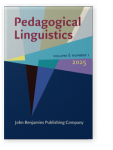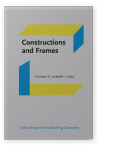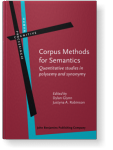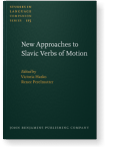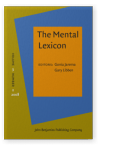Dagmar Divjak
List of John Benjamins publications for which Dagmar Divjak plays a role.
Book series
2025 The types of cues that help you learn: Pedagogical implications of a computational simulation on learning the English tense/aspect system from exposure Pedagogical Linguistics 6:1, pp. 53–77 | Article
Despite a considerable amount of research conducted on the development of tense/aspect (TA) usage in English by second language (L2) learners, nuances in uses of TAs remain elusive to many L2 learners of English: the grammatical accounts proposed appear difficult to apply as they are either too… read more
2024 Ruled by construal? Framing article choice in English Constructions and Frames 16:1, pp. 1–29 | Article
In cognitive linguistics, grammatical structure is known to be representative of meaning. This is also true of English articles. In this paper, we argue that the choice of article, when the grammar allows it, is dependent on the wider discourse context and most importantly on how the speaker… read more
2015 Exploring the grammar of perception: A case study using data from Russian Sensory Perceptions in Language and Cognition, Caballero, Rosario and Carita Paradis (eds.), pp. 44–68 | Article
In this paper, I pursue the distributional hypothesis that the meaning of a word is derived from the linguistic contexts in which it occurs and apply it to verbs of perception. Differently from NLP implementations of the distributional hypothesis, I explicitly limit the range of variables to the… read more
2015 The role of non-canonical subjects in the overall grammar of a language: A case study of Russian Subjects in Constructions – Canonical and Non-Canonical, Helasvuo, Marja-Liisa and Tuomas Huumo (eds.), pp. 293–317 | Article
We offer a model of Russian core syntax in terms of a radial category network
of constructions. The prototype corresponds to Langacker’s “canonical event
model”, namely a prototypical transitive event, and more peripheral constructions
are related to it via metaphor and metonymy. From this… read more
2014 Cluster analysis: Finding structure in linguistic data Corpus Methods for Semantics: Quantitative studies in polysemy and synonymy, Glynn, Dylan and Justyna A. Robinson (eds.), pp. 405–441 | Article
Cluster analysis is an exploratory data analysis technique, encompassing a number of different algorithms and methods for sorting objects into groups. Cluster analysis requires the analyst to make choices about dissimilarity measures, grouping algorithms, etc., and these choices are difficult to… read more
2010 Chapter 13. Aquamotion verbs in Slavic and Germanic: A case study in lexical typology New Approaches to Slavic Verbs of Motion, Hasko, Victoria and Renee Perelmutter (eds.), pp. 315–341 | Article
The paper contrasts the verbs plyt’/plavat’ in Russian and plynac/plywac in Polish with their correspondences in Dutch, English and Swedish against a broader typological background. The three Germanic languages use several verbs for what is covered by a pair of derivationally related verbs in each… read more
2009 Behavioral profiles: A corpus-based approach to cognitive semantic analysis New Directions in Cognitive Linguistics, Evans, Vyvyan and Stéphanie Pourcel (eds.), pp. 57–75 | Article
2008 Clusters in the mind? Converging evidence from near synonymy in Russian The Mental Lexicon 3:2, pp. 188–213 | Article
This paper provides experimental evidence to support the existence of mental correlates of lexical clusters. Data were collected by means of a sorting task and a gap filling task designed to study the cognitive reality of clusters of near synonyms as well as of the properties that have high… read more

